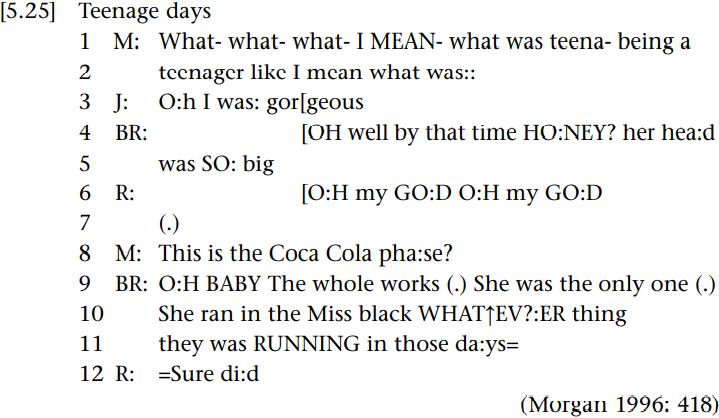

Grammar


Tenses


Present

Present Simple

Present Continuous

Present Perfect

Present Perfect Continuous


Past

Past Simple

Past Continuous

Past Perfect

Past Perfect Continuous


Future

Future Simple

Future Continuous

Future Perfect

Future Perfect Continuous


Parts Of Speech


Nouns

Countable and uncountable nouns

Verbal nouns

Singular and Plural nouns

Proper nouns

Nouns gender

Nouns definition

Concrete nouns

Abstract nouns

Common nouns

Collective nouns

Definition Of Nouns


Verbs

Stative and dynamic verbs

Finite and nonfinite verbs

To be verbs

Transitive and intransitive verbs

Auxiliary verbs

Modal verbs

Regular and irregular verbs

Action verbs


Adverbs

Relative adverbs

Interrogative adverbs

Adverbs of time

Adverbs of place

Adverbs of reason

Adverbs of quantity

Adverbs of manner

Adverbs of frequency

Adverbs of affirmation


Adjectives

Quantitative adjective

Proper adjective

Possessive adjective

Numeral adjective

Interrogative adjective

Distributive adjective

Descriptive adjective

Demonstrative adjective


Pronouns

Subject pronoun

Relative pronoun

Reflexive pronoun

Reciprocal pronoun

Possessive pronoun

Personal pronoun

Interrogative pronoun

Indefinite pronoun

Emphatic pronoun

Distributive pronoun

Demonstrative pronoun


Pre Position


Preposition by function

Time preposition

Reason preposition

Possession preposition

Place preposition

Phrases preposition

Origin preposition

Measure preposition

Direction preposition

Contrast preposition

Agent preposition


Preposition by construction

Simple preposition

Phrase preposition

Double preposition

Compound preposition


Conjunctions

Subordinating conjunction

Correlative conjunction

Coordinating conjunction

Conjunctive adverbs


Interjections

Express calling interjection


Grammar Rules

Passive and Active

Preference

Requests and offers

wishes

Be used to

Some and any

Could have done

Describing people

Giving advices

Possession

Comparative and superlative

Giving Reason

Making Suggestions

Apologizing

Forming questions

Since and for

Directions

Obligation

Adverbials

invitation

Articles

Imaginary condition

Zero conditional

First conditional

Second conditional

Third conditional

Reported speech


Linguistics

Phonetics

Phonology

Linguistics fields

Syntax

Morphology

Semantics

pragmatics

History

Writing

Grammar

Phonetics and Phonology

Semiotics


Reading Comprehension

Elementary

Intermediate

Advanced


Teaching Methods

Teaching Strategies

Assessment
Reflection: Signifying in African-American Vernacular English (AAVE)
المؤلف:
Jonathan Culpeper and Michael Haugh
المصدر:
Pragmatics and the English Language
الجزء والصفحة:
151-5
13-5-2022
633
Reflection: Signifying in African-American Vernacular English (AAVE)
The term signifying is used by speakers of African American Vernacular English to refer to instances where the recognition of unsaid meaning is obscured by the ostensible content or function of what is said. Morgan (1996) focuses on two related practices of signifying:
Pointed indirectness: “when a speaker ostensibly says something to someone (mock receiver) that is intended for – and to be heard by – someone else and is so recognized”
Baited indirectness: “when a speaker attributes a feature to someone which may or may not be true or which the speaker knows the interlocutor does not consider to be a true feature” (Morgan 1996: 406)
While these two ways of signifying are not necessarily unique to speakers of AAVE, the ways in which they are accomplished as signifying involves resources particular to this variety of English. These include what is termed reading dialect, where lexical or grammatical features of AAVE are mixed in with mainstream American English in an obvious way: certain prosodic features, such as loud talking, high pitch and so on; and interactional features, such as gaze or parallelism in grammatical structures and word order. In the following excerpt from a conversation between African-American family members, including the researcher (Marcyliena) and three others (Judy, Ruby and Baby Ruby), we can observe some of these resources deployed in framing their talk as signifying on one of the participants, Judy. Marcyliena is Judy’s daughter, Ruby is Judy’s sister, while “Baby Ruby” (her nickname) is Judy and Ruby’s niece.

This signifying episode is triggered by Judy’s response in line 3 to the researcher’s question about what it was like being a teenager at that time. Baby Ruby employs pointed indirectness, in line 4–5, by addressing the researcher, who is also Judy’s daughter, rather than Judy herself in the subsequent turn, and baited indirectness through a negative assessment that is directed at Judy, namely, being conceited (despite the fact that Judy probably had good reason to think she was beautiful). What makes this signifying on Judy rather than just simply teasing or mocking is indexed through a number of features of Baby Ruby’s, and subsequently Ruby’s, talk. These include AAVE lexical items and prosody that signal a negative assessment amongst African-American women, such as honey (line 4), which is “often used among women to introduce a gossip episode or an unflattering assessment”, and baby (line 9), which “can imply a negative assessment as well as address those present” (ibid. 420). The concessive noun phrase “whatever” also functions as a negative quantifier of “thing” (line 10), which in this case in AAVE refers to an “attitude, belief or life”. In other words, it means something like “whatever fi t her ego” (ibid. 420). Finally, Judy’s silence also confirms that signifying has occurred here, since any response would only confirm Baby Ruby’s negative assessment, thereby treating the baited indirectness as true. We will revisit the issue of mocking in other varieties of English in our discussion of impoliteness.
 الاكثر قراءة في pragmatics
الاكثر قراءة في pragmatics
 اخر الاخبار
اخر الاخبار
اخبار العتبة العباسية المقدسة

الآخبار الصحية















 "المهمة".. إصدار قصصي يوثّق القصص الفائزة في مسابقة فتوى الدفاع المقدسة للقصة القصيرة
"المهمة".. إصدار قصصي يوثّق القصص الفائزة في مسابقة فتوى الدفاع المقدسة للقصة القصيرة (نوافذ).. إصدار أدبي يوثق القصص الفائزة في مسابقة الإمام العسكري (عليه السلام)
(نوافذ).. إصدار أدبي يوثق القصص الفائزة في مسابقة الإمام العسكري (عليه السلام) قسم الشؤون الفكرية يصدر مجموعة قصصية بعنوان (قلوب بلا مأوى)
قسم الشؤون الفكرية يصدر مجموعة قصصية بعنوان (قلوب بلا مأوى)


















